Deep in the sacred Himalayan mountains of India, something inexplicable happened that experts are still trying to piece together. During the particularly warm year of 1942, a park ranger was collecting rare plants at a 16,000-foot elevation when he came to Roopkund Lake. As he descended down the rocky bank, he saw that the shore contained hundreds of human bones with swollen flesh still clinging to them. Who were the Roopkund Lake skeletons and how did they get there?
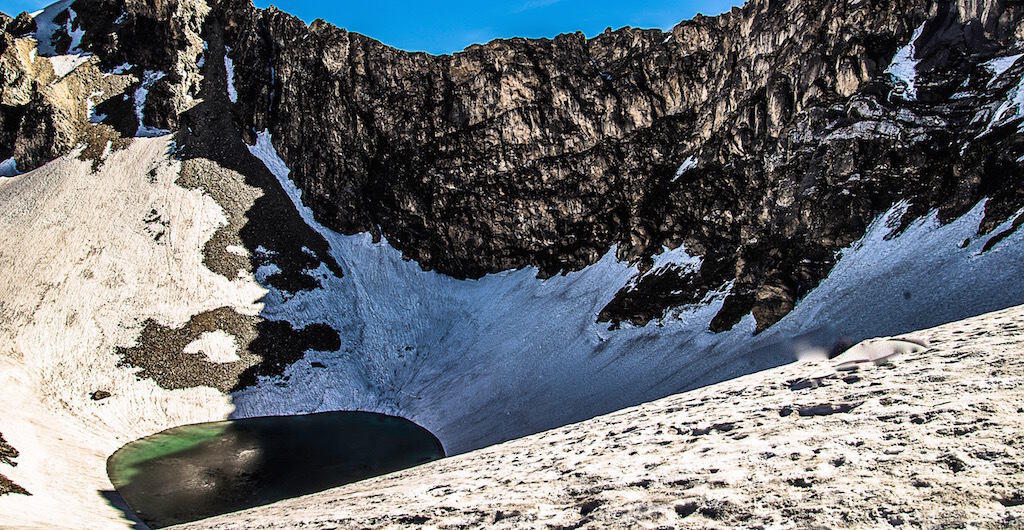
What is the Mystery of Roopkund Lake?
Also known as Rudrakund, Mystery Lake, or Skeleton Lake, Roopkund exists at the base of the Trisul Mountains in the far northern reaches of Uttarakhand state of India. The lake is roughly 500 square feet and six to eight feet deep. August and September are the only months when the lake is visible, while the rest of the year it lies hidden under a thick blanket of snow.
The ranger H.K. Madhwal was the first official person to report the skeletons after he encountered them during his plant-hunting expedition in 1942. He observed, “The whole place was littered with scores of human bodies. Flesh like inflated rubber was sticking to most of the bodies. Their grinning faces made the scene still more hideous. Our porters were so much terrified at this gruesome sight that they at once took to their heels, thinking that they had landed in a ghost land.” (Negi, R.S.).
After the porters ran away from the lake, Madhwal and his assistant stayed behind to take a closer look. They saw that some of the bodies and leather sandals (chappals) were larger than typical. That style of footwear did not come from the area. Additionally, there were bamboo sticks, wooden utensils, and umbrellas sticking out of the snow. Experts had no concrete answers to explain who the bodies were or how they got there, and, thus, the great mystery of Roopkund Lake unfolded.
Changes to the Skeletons
After Madhwal’s discovery, no official investigations occurred, as India was entrenched in WWII under British rule. In 1955, everything changed when one of the Government Deputy Ministers made a press announcement about the Roopkund Lake skeletons. At that point, officials launched an investigative expedition to the lake.
You May Also Like: Grave of the Lady with the Parasol Umbrella
However, because researchers collected just a few bones, including two skulls, an arm, a leg, a jaw, and several artifacts, the final report provided little information. Then in 1956, three separate investigations took place in which scientists took large collections of bones and relics.
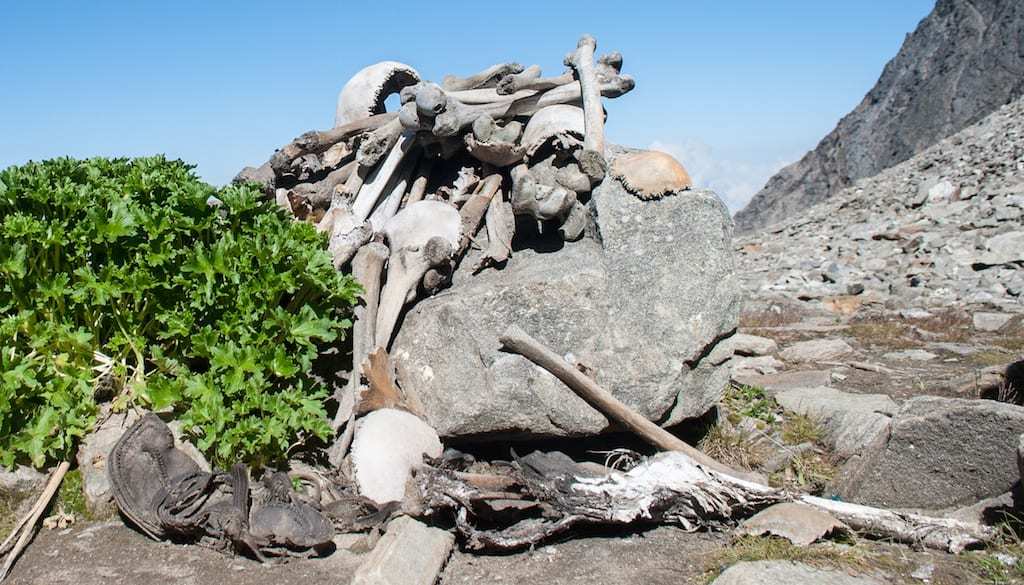
Unfortunately, by the time the research began in 1955 the scene at the skeleton lake had changed significantly. Thirteen years had passed since Madhwal’s discovery, and whole bodies were no longer visible. Researchers witnessed large rocks rolling down the steep embankment, and they surmised that the stones, with avalanches and earthquakes over the years, had scattered the bones and caused damage to the skeletons.
Religion in the Himalayas
In order to understand the mystery behind the Roopkund Lake bodies, we must look at the significance of the Himalayas. People of the region revere the Nanda Devi mountains. These towering peaks lie to the northeast of the lake and are a part of the greater Nanda Devi National Park and Biosphere. The sacred region contains shrines strewn throughout.
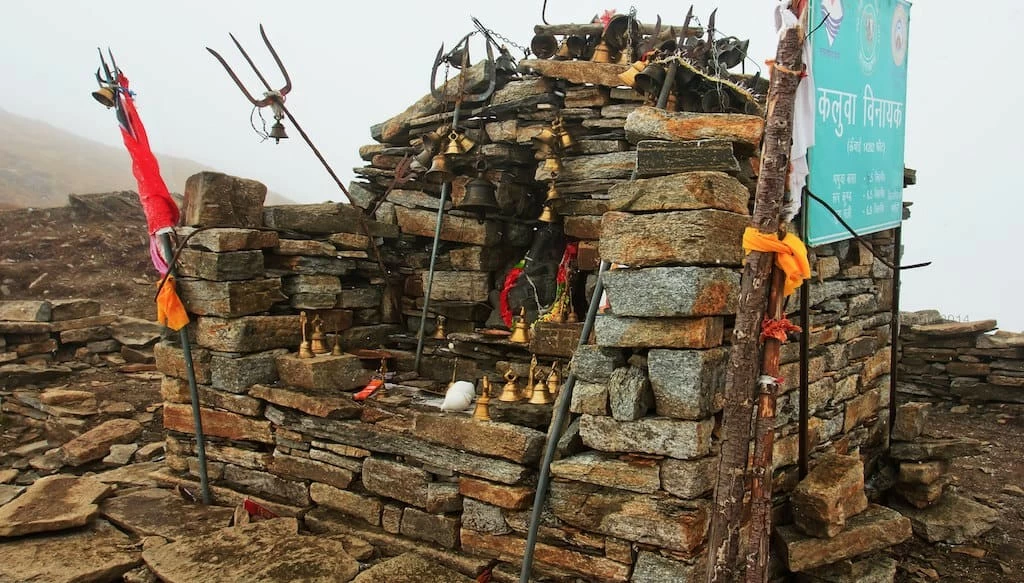
Nanda Devi, meaning “bliss-giving goddess,” derives its name from the most important and revered goddess in the Garhwal region of Uttarakhand. Nanda Devi, the goddess, represents Shiva’s consort, Parvati, who “first came onto the earth as the daughter of Himavan, the king of the Himalaya, and has, therefore, always been associated with the mountains” (Carter 1977).
The goddess mythology permeates the lives of the local residents, and huge festivals in her honor take place regularly. Additionally, devotees take dangerous pilgrimages through the mountain seeking out her blessings. The whole area, including the lake, commands deep reverence as the manifestation and embodiment of the goddess, Nanda.
The Mythology of Trisul and Roopkund
Local mythology also directly refers to the Trisul formation and Roopkund Lake. Both lie in the shadows of Nanda Devi mountain. In one version of the story, Mahadev (Shiva), the supreme or great being, struck his trident to the ground to make a place where his consort Nanda Devi could quench her thirst. This created the Trisul (meaning “trident”) mountains and two lakes.
While she was drinking water in one of the lakes, she peered in and saw her own image or “beauty,” her Roop. Thus, the name Roopkund means “reflection lake” or “beauty lake.” Another version of the story says that it wasn’t Shiva but Nanda Devi who struck the trident (Carter 1977). Note: notice the tridents in the photo of the shrine above.
Does a Local Myth Explain the Skeletons?
Nanda is a goddess with many faces and moods, at times expressing wrath, jealousy, or insecurity. According to stories the locals tell and sing about today, it was, in fact, her mercurial nature that resulted in the skeletons in the lake. As the story goes, King Jasdhawal of Kannauj and his pregnant Queen, Balampa, took their entourage with them on a pilgrimage to Nanda Devi. They also made sure to bring along their earthly pleasures in the form of beautiful dancers.
However, they broke important traditional taboos about the pilgrimage. “The rules stated that music, children, women, elderly folks, leather goods, the lower castes were strictly prohibited from proceeding beyond Wan,” (Negi, Chandra, 2013, 92) which is about three or four days before Roopkund on the trail.
You May Also Like: Machu Picchu Facts: 11 Fascinating Details
The first offense was taking females and children so far on the pilgrimage trail. Then, when the king asked the girls to dance for him in the sacred land, his insolence brought great disrespect to the goddess. Finally, when Balampa gave birth near the lake, she soiled the holy ground with her blood. Thus, in her immense wrath, Nanda Devi pushed all the dancing girls into the underworld (or turned them into stone). She then summoned a violent storm that rained huge hailstones that pummeled the rest of the group to death at Roopkund Lake.
Raj Jat Pilgrimages
Pilgrimages, called Raj Jat, have been taking place for hundreds of years. By some accounts, they have occurred since the ninth century when a group moved into the region and brought the cult of Nanda with them (Negi, R.S.). In honor of the goddess, the Raj Jat occurs every 12 years and takes 22 days to complete the 175 miles – a good portion of that in bare feet. During this major festival, thousands of people from far and wide travel to take part in the pilgrimage. About 50,000 people participate, but not everyone can go all the way to the final destination past Roopkund to Homkund Lake. The last Raj Jat took place in 2014.
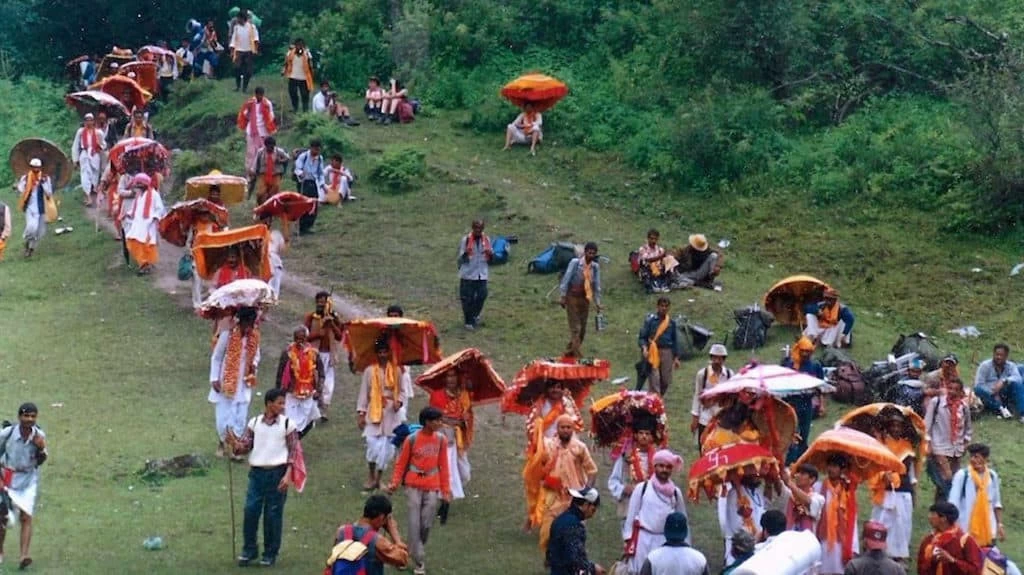
Homkund Lake is the dwelling place of the gods in the Trisul mountains. The symbolism of the trek reflects Nanda Devi’s trip to her home, and each person on the pilgrimage is escorting and helping her get there. But first, the trail winds along the steep upper edge of the skeleton lake on the Jyura Gali, or “Alley of Death.” As the name suggests, the Jyura Gali is a sheer ridge that is fatally dangerous, but it does provide a view into the lake. The area is also prone to sudden and violent storms that can produce hail but offers no place for shelter.
Accidents and Suicides at the Lake
R.S. Negi, scientist and researcher, indicates that there were so many accidental deaths from the Gali that the government banned the pilgrimage a few hundred years ago and removed the ban only in the late 19th century. People who fell from the Gali perished on the cliffside and shores of Roopkund and presumably mixed in with the other skeletons at the lake over the years.
Interestingly, there is a wide belief that many pilgrims also used the lake for self-sacrifice. Inscriptions at stops and shrines along the pilgrimage trail reveal the intentions of some pilgrims to take their own lives at the lake. According to Negi, there were so many cases of Atmosarg, the government banned these suicides in 1931.
Throughout time, especially during warmer years when the snow has melted off sufficiently, pilgrims have seen the skeletons at the lake. In fact, in 1925 after the Raj Jat, witnesses reported the bodies lying on its northeastern bank. (Negi, R.S.).
Studies of the Skeletons
Initial studies suggested that there were two genetically distinct groups of people who died in a large event. The first group was taller and more robust with longer heads. The other group was of smaller stature, lighter frames, and rounder heads. Some individuals within the larger group appear to have been related, as indicated by certain extra bones (Wormian bones) in the skull. Researchers believe this to be a genetic condition that passes on about 50 percent of the time (Pant).
Some of the round skulls had depressions in them, leading the scientists to speculate that this group may have been porters who carried heavy packs strapped over their heads. It appears that heavy round objects struck the heads of many individuals while they were still alive. This is evident in antemortem depression skull fractures near the front or top of the skulls, and for these people, this was likely the cause of death through bleeding, brain swelling, and/or hypothermia. However, not every individual showed head trauma.
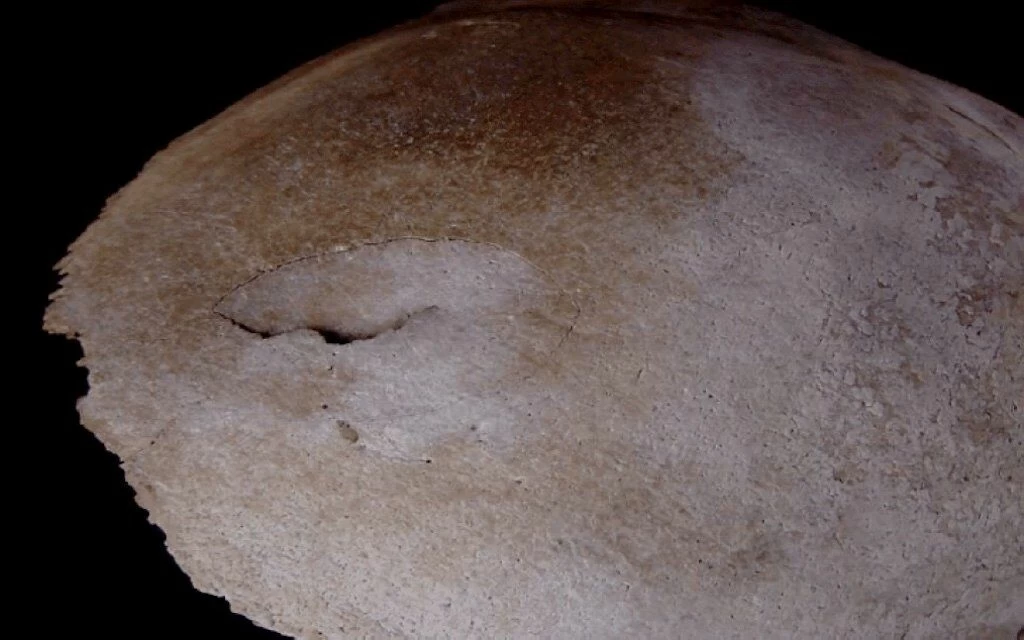
All studies contained skeletal remains that included men, women, and children of various ages. Some studies indicated that death occurred 500-800 years ago. On the contrary, a 2003 National Geographic study concluded that all the victims perished at the same time in one large fatal event in the ninth century. (Negi, R.S.).
Where Were the Victims From?
Although we still do not know exactly where the victims may have originated before they met their death at the lake, scientists have determined what their genetic ethnicities were. Éadaoin Harney et al. released their findings based on recent DNA work in 2017. They found two main groups, South Asian and West-Eurasian, with three distinct clusters. Harney broke up the clusters into Roopkund A, B, and C (one individual).
- A has South Asian ancestry from the Indian Cline, but they do not belong to one specific population. This group dates to around 800 CE, although Harney notes that their deaths may not have occurred in one single event.
- B derives from Eastern Mediterranean ancestry, with similarities to Greeks and Levantine populations. This group dates to around 1800 CE.
- C consists of one individual of East Asian or Southeast Asian descent, also dating to around 1800 CE.
Unlike previous findings that were based on the characteristics of skulls, the genetic research of Harney et al. did not find any closely related individuals. Additionally, these results show that the skeletons were deposited in more than one event.
What Happened at Skeleton Lake?
The greatest mysteries of Roopkund Lake are still unsolved. Speculation abounds about who the people may have been, what they were doing in the treacherous area, and how they died. The previously held theory is that a hailstorm inundated a group of pilgrims and killed them all in one disaster. However, the story is not quite that simple.
As it turns out, the skeletons were ethnically and culturally diverse. They also died at different times, rather than in one catastrophic event. If the Raj Jat began in the ninth century, this could correspond approximately with the deaths of Roopkund A group as described by Harney, above.
The fact that there were men, women, and children tells us that they were probably not all pilgrims. However, it is uncertain when the ban against women and children on the trail started. Were the larger people refugees fleeing war or famine of another land or immigrants from the steppes or Iran? How many of them were suicide victims who sacrificed themselves to the gods? Did a large hailstorm really kill King Jasdhawal and his entourage?
In August of 2018, the Indian government banned all treks to Roopkund in an attempt to preserve the degrading meadows and save endangered species. Nonetheless, scientists continue their work to unlock the mysteries of the lake. Until then, this dangerous spot along the pilgrimage route remains an enigmatic paradox with hundreds of skeletons still trapped under the ice of the majestic Nanda Devi mountains.
References:
-Carter, H. Adams. “The Goddess Nanda and Place Names of the Nanda Devi Region” 1977. The American Alpine Journal and Accidents in North American Climbing.
-Harney, Éadaoin. Ancient DNA from the Skeletons of Roopkund Lake Reveals Migrants of Mediterranean Origin in South Asia. Brown University Blogs.
–Negi, R.S. “Rupkund Human Remains: A Mystery Yet Unresolved.” IGNCA.
-Negi, Chandra. In the garb of Nanda Devi Raj Jaat- A cultural treatise of Western Himalaya. 2013.
–Pant, Alka Barthwal. “Roopkund Mystery “Pathology Reveals Head Injury behind the Casualties.” 2018. Academia.edu.